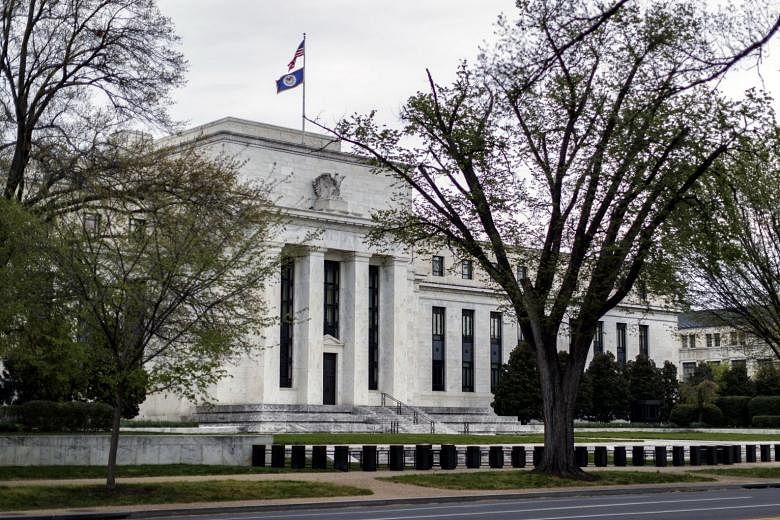WASHINGTON (REUTERS) - The Federal Reserve kept interest rates pinned near zero on Wednesday (Sept 16) and made a bold, new promise: to keep them there until inflation is on track to "moderately exceed" the US central bank's 2 per cent inflation target"for some time."
The new guidance marks a monetary policy shift, first announced by the Fed last month, that is aimed to offset years of weak inflation and allow the economy to keep adding jobs for as long as possible.
"Effectively, what we are saying is that rates will remain highly accommodative until the economy is far along in its recovery," Fed chairman Jerome Powell said in a news conference following the release of the central bank's latest policy statement and economic projections.
"That should be a very powerful statement in supporting economic activity" and returning inflation to the Fed's 2 per cent inflation goal faster, he said, adding that he thinks the forward guidance will be "durable".
The recovery, Powell noted, is ongoing but the pace is expected to slow, requiring continued support from the Fed and, he said, from further government spending.
The Fed's decision drew two dissents, one from a policymaker who thought it went too far, and the other from one who thought it did not go far enough.
The Fed also used its policy statement to begin to pivot from stabilising financial markets to stimulating the economy, saying that it would keep its current government bond-buying at least at the current pace of US$120 billion (S$160 billion) a month, in part to ensure "accommodative" financial conditions in the future.
US stocks added to earlier gains after the release of the statement before trending lower as Powell spoke, with the S&P 500 index last down 0.1 per cent and the Nasdaq falling 0.8 per cent. Long-end yields rose, with the 30-year US Treasury yield last at 1.44 per cent and the benchmark 10-year yield at 0.68 per cent. The dollar edged up against a basket of major trading partner currencies.
'TREMENDOUS' HARDSHIP
The coronavirus epidemic continued to weigh on the economy, the Fed said in its statement, released after the end of its latest two-day policy meeting, even as officials upgraded their immediate outlook for the economy.
The virus "is causing tremendous human and economic hardship," the rate-setting Federal Open Market Committee said, adding that the Fed is "committed to using its full range of tools to support the US economy in this challenging time."
New economic projections released with the policy statement showed most policymakers see interest rates on hold through at least 2023, with inflation never breaching 2 per cent over that period.
Powell said the Fed "is both confident and committed and determined" to modestly overshooting 2 per cent inflation, but added that it would take time.
Policymakers saw the economy shrinking 3.7 per cent this year, far less than the 6.5 per cent decline forecast in June, and unemployment, which registered 8.4 per cent in August, was seen falling to 7.6 per cent by the end of the year.
All Fed policymakers saw interest rates staying where they are through 2022, with four eying the need for a hike in 2023.
But in pledging to keep rates low until inflation was moving above the 2 per cent target, to make up for years spent below it, the Fed reflected its new tilt towards stronger job growth, announced late last month after a nearly two-year review.
Both dissenters to the statement, Dallas Fed President Robert Kaplan and Minneapolis Fed President Neel Kashkari, took specific issue with the central bank's guidance that it would keep interest rates where they are "until labour market conditions have reached levels consistent with... maximum employment and inflation has risen to 2 per cent and is on track to moderately exceed 2 per cent for some time."
Kaplan said he would have preferred to have "greater flexibility" once inflation and maximum employment were on track to reaching the Fed's goals, an easier hurdle to reach.
Kashkari's dissent suggests he wanted a higher hurdle: for rates to stay where they are until core inflation - which often runs cooler than overall inflation - has reached 2 per cent "on a sustained basis."

